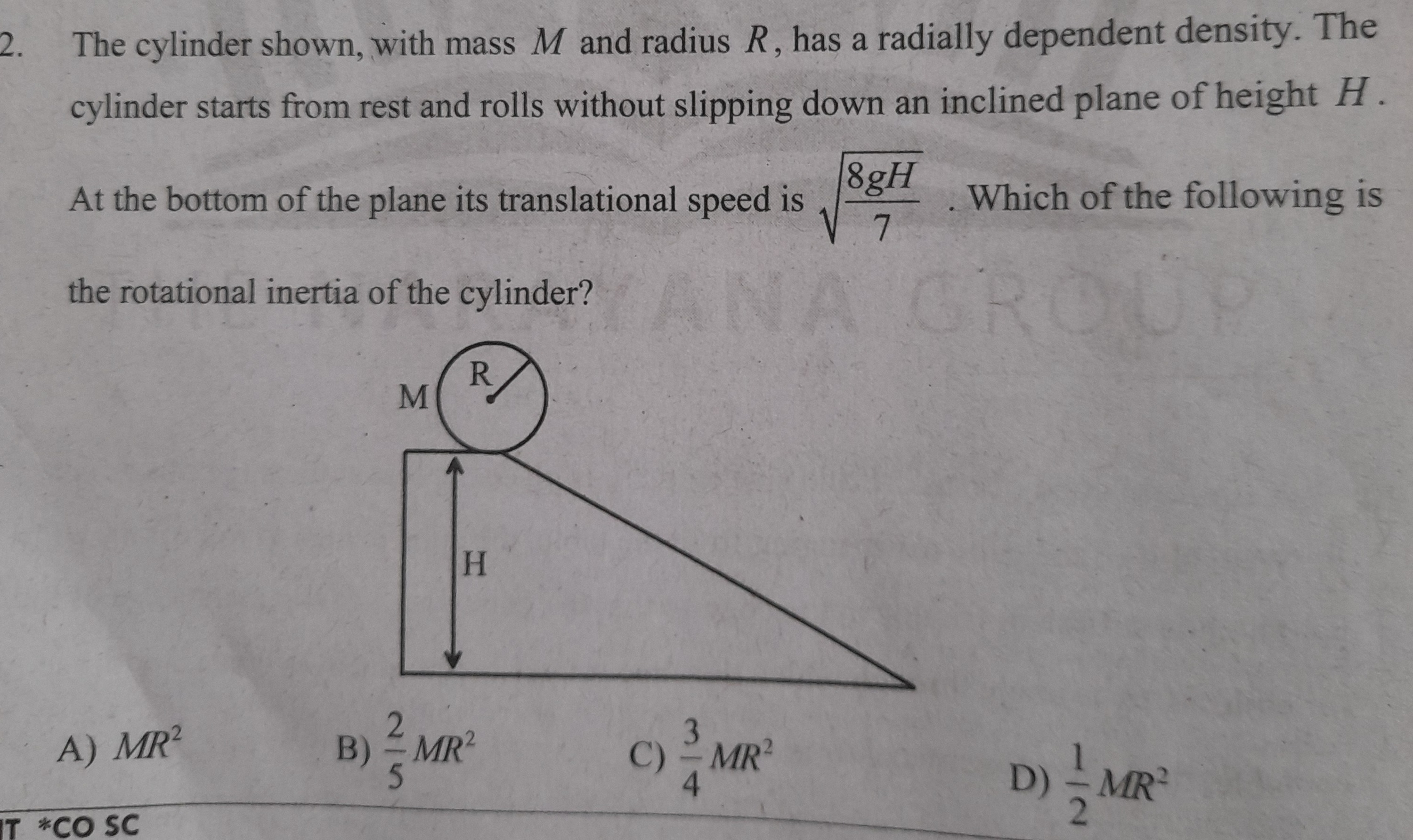Question
Question: The cylinder shown, with mass $M$ and radius $R$, has a radially dependent density. The cylinder sta...
The cylinder shown, with mass M and radius R, has a radially dependent density. The cylinder starts from rest and rolls without slipping down an inclined plane of height H.
At the bottom of the plane its translational speed is 78gH. Which of the following is the rotational inertia of the cylinder?

MR^2
\frac{2}{5}MR^2
\frac{3}{4}MR^2
\frac{1}{2}MR^2
The rotational inertia of the cylinder is 43MR2.
Solution
The problem can be solved using the principle of conservation of energy. The initial energy of the cylinder at height H is purely potential energy, Ei=MgH. At the bottom of the incline, this energy is converted into translational kinetic energy and rotational kinetic energy. The total final energy is Ef=21Mv2+21Iω2.
For rolling without slipping, the relationship between translational velocity v and angular velocity ω is v=Rω, which means ω=Rv.
Applying conservation of energy, Ei=Ef: MgH=21Mv2+21I(Rv)2
We are given that v=78gH, so v2=78gH. Substituting this into the energy equation: MgH=21M(78gH)+21I(7R28gH) MgH=74MgH+7R24IgH
Dividing the entire equation by gH: M=74M+7R24I
To solve for I, rearrange the equation: M−74M=7R24I 73M=7R24I
Multiply both sides by 7R2: 3MR2=4I
Therefore, the rotational inertia I is: I=43MR2
